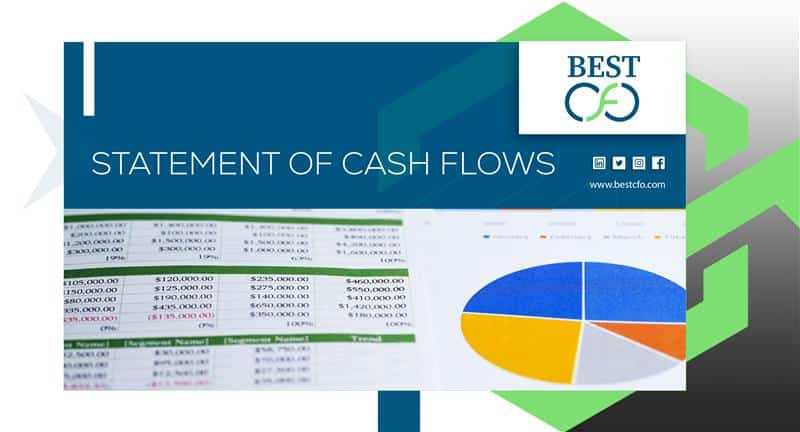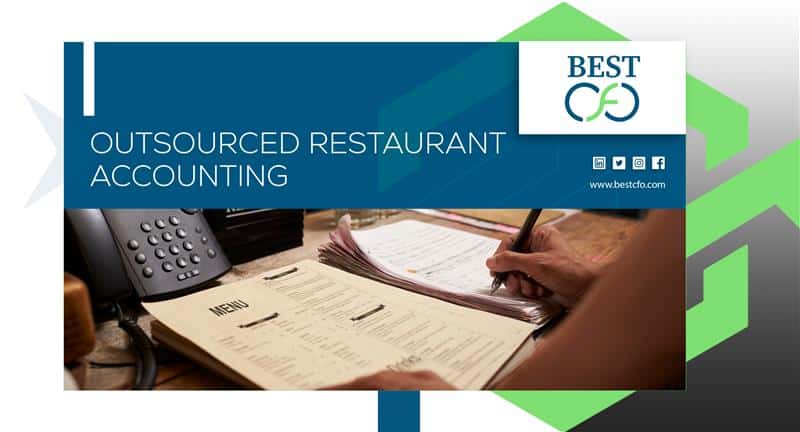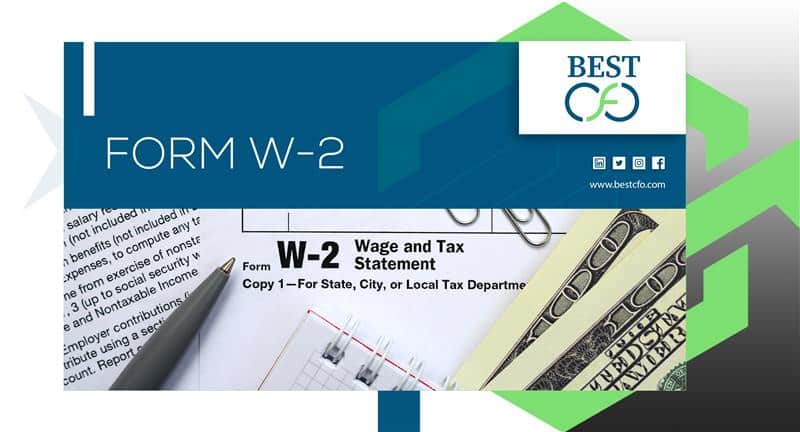
|
Getting your Trinity Audio player ready...
|
What is Cash Flow? A Complete Guide for Startups and Business Owners
Understanding cash flow is crucial for any startup and business owner. Whether you’re managing a big firm or beginning a new endeavor, keeping a careful watch on cash flow ensures you can meet obligations, fund new projects, and maintain your organization on strong ground. Without solid cash flow, even the most promising firms can fall.
In this article, we’ll walk you through the components of cash flow, how it differs from revenue, and how to understand and design a cash flow statement to establish a sustainable, profitable business.
Components of Cash Flow
Cash flow represents the net balance of cash moving into and out of a business at a given time. It can be broken down into three main components:
Operational Cash Flow
This is the cash generated from routine business operations. It includes receipts from customers, payments to suppliers, wages, and other fundamental operating costs. Operating cash flow (OCF) is the backbone of every company’s financial health and indicates its ability to maintain itself without external finance.
Investing Cash Flow
Investing activities involve cash used for or generated from investments such as purchasing equipment, securities, or property. A negative investment cash flow isn’t necessarily bad—it often signals a company is investing in future growth.
Financing Cash Flow
Financing cash flow tracks money from or to investors and creditors. It includes issuing stock, borrowing funds, and paying dividends. Positive financing cash flow can indicate new funding, while negative numbers might show loan repayments or dividend payouts.
What Is Revenue?
Revenue is the total amount of income generated by routine business activities, often from the sale of goods and services. Often termed the “top line,” revenue shows at the top of the income statement and is critical for analyzing corporate performance.
Unlike cash flow, revenue doesn’t necessarily mean cash in hand. It may contain accounts receivable (money yet to be collected), making it crucial not to confuse good revenue numbers with robust liquidity.
What’s the Difference Between Cash Flow and Revenue?
The difference between cash flow and revenue lies in timing and realization.
- Revenue measures the money earned during a specific period, regardless of when cash is received.
- Cash flow measures the movement of actual cash how much money has entered or exited your accounts.
A business can report high revenue yet struggle with poor cash flow if customers delay payments, leading to a cash crunch. In contrast, a company with modest revenue but strong cash management can thrive.
Types of Cash Flow
Cash flow isn’t a one-size-fits-all concept. Here are two essential types every business owner must know:
Operating Cash Flow (OCF)
Operating cash flow reflects the cash generated from a company’s primary activities. It excludes investments and financing and directly measures the company’s core profitability.
Formula:
Operating Cash Flow = Net Income + Non-Cash Expenses + Changes in Working Capital
Investment Cash Flow (ICF)
Investment cash flow relates to cash used for investments like purchasing machinery, technology, or other assets. It reveals whether a business is investing in long-term growth or selling off assets.
How to Calculate Cash Flow
This is the simplest way to calculate your cash flow:
Cash Flow = Net Income + Non-Cash Expenses + Changes in Working Capital
- Net Income: Profit after all expenses and taxes.
- Non-Cash Expenses: Items like depreciation and amortization that reduce net income but don’t involve cash.
- Changes in Working Capital: Changes in current assets and liabilities (like accounts receivable, inventory, and payables).
Accurately calculating cash flow gives you a clear picture of your company’s real liquidity, not just theoretical profitability.
How to Achieve Positive Cash Flow
Maintaining positive cash flow is critical for survival and growth. Here’s how to stay in the green:
- Speed Up Receivables: Encourage faster customer payments.
- Negotiate Better Payables Terms: Extend payment deadlines with suppliers.
- Cut Unnecessary Costs: Reduce overhead where possible.
- Increase Revenue Streams: Introduce new products or services.
- Maintain Lean Operations: Avoid bloated inventories and unnecessary spending.
By managing both income and outgoings diligently, you can keep your cash flow positive even in challenging times.
How to Read a Cash Flow Statement
The cash flow statement breaks down cash inflows and outflows over a period. It has three main sections:
- Operating Activities: Cash generated or spent on core business functions.
- Investing Activities: Purchases or sales of assets.
- Financing Activities: Cash from investors, loans, or repayments.
Reading a cash flow statement enables business owners to pinpoint which activities consume cash and where the opportunities for better management lie.
Cash Flow Statement Example
For example:
Activity | Amount |
Net Income | $50,000 |
Depreciation | $5,000 |
Decrease in Accounts Receivable | $3,000 |
Increase in Inventory | -$2,000 |
Purchase of Equipment | -$20,000 |
Loan Payment | -$10,000 |
Operating Cash Flow: $50,000 + $5,000 + $3,000 – $2,000 = $56,000
Investing Cash Flow: -$20,000
Financing Cash Flow: -$10,000
Net Cash Flow: $26,000
A positive net cash flow shows healthy liquidity after accounting for all operations, investments, and financial activities.
Cash Flow Planning
Active cash flow planning shields businesses from unexpected downturns.
Use Breakeven Point as a Benchmark
Your breakeven point is when your revenues match your expenses. Knowing this number helps predict when new investments or expansions are viable based on projected cash flow.
Look at Debt Through the Lens of Cash Flow
Debt isn’t inherently bad if managed well. Evaluate debt not just by its size but by how repayment obligations impact your cash flow. Loans with flexible payment schedules often ease cash strain.
Build a Highly Productive Team
A motivated, efficient team contributes significantly to positive cash flow.
- Invest in employee training to increase productivity.
- Implement performance incentives tied to company profitability.
- Hire slow, fire fast—ensure every team member adds value.
Be Strict About Receivables
Unpaid invoices are a silent cash flow killer.
- Set clear payment terms (e.g., Net 15 or Net 30).
- Offer small discounts for early payments.
- Follow up immediately when payments are overdue.
Tight control of receivables accelerates your cash cycle.
Maintain an Advance Emergency Fund
Business emergencies are inevitable—unexpected expenses, economic downturns, or lost customers.
Maintaining an emergency fund (at least 3–6 months of operating expenses) ensures your cash flow remains stable when surprises arise.
Keep Clean & Accurate Records
Detailed financial records prevent cash leaks and make cash flow forecasting more accurate.
- Regularly reconcile bank accounts.
- Track expenses by category.
- Monitor accounts receivable and payable diligently.

Establish Habits and Rules
Success stems from consistent cash flow management habits:
- Review cash flow weekly.
- Approve new expenses only after assessing liquidity.
- Make saving a non-negotiable business rule.
Small, smart habits protect your long-term financial stability.
How Much Low Cash Flow is Too Low?
If your cash flow barely covers fixed expenses (rent, payroll, utilities) with no margin for emergencies or investments, it’s dangerously low.
Warning signs include:
- Frequently dipping into credit lines.
- Delaying supplier payments.
- Holding off payroll or necessary purchases.
Healthy cash flow should comfortably cover essentials with surplus available for growth.
Be Active if You Are Outsourcing Your Services
When you outsource critical functions like accounting, IT, or marketing:
- Regularly review contracts and deliverables.
- Ensure outsourced vendors are providing measurable ROI.
- Keep a close watch on how outsourcing impacts your cash flow.
Outsourcing done wrong can turn into a cash drain rather than a cost-saving strategy.
Conclusion
Mastering cash flow management isn’t optional, it’s fundamental for survival and growth. Startups and business owners who stay vigilant, plan ahead, and maintain clean financial practices are far more likely to weather storms and seize opportunities. Whether you’re scaling up operations or simply aiming for financial stability, understanding and optimizing your cash flow is the smartest move you can make.
FAQs About Cash Flow
What is cash flow in simple terms?
Cash flow is the movement of money into and out of your business over a given period, reflecting its liquidity and ability to meet financial obligations.
Why is cash flow important for startups?
Startups often have irregular income and high expenses in their early stages. Managing cash flow ensures they can cover operating costs, invest in growth, and avoid running out of cash.
How often should a business review its cash flow?
At minimum, businesses should review their cash flow monthly. Companies with tight cash reserves or rapid growth may benefit from weekly reviews to stay ahead of potential issues.
Can a profitable business have cash flow problems?
Yes. Profitability doesn’t always translate to liquidity. Delayed accounts receivable, high operating costs, or large investments can create cash flow issues even if a business is profitable on paper.
What are common causes of cash flow problems?
Some common causes include:
- Late customer payments
- Excessive overhead costs
- Overstocked inventory
- Rapid expansion without adequate funding
- Poor working capital management
What’s the difference between cash flow and profit?
Cash flow measures actual money entering and leaving your business, while profit is the financial gain after all expenses are deducted from revenue. A business can be profitable but still experience negative cash flow due to delayed payments or large investments.
How can I improve my business’s cash flow?
There are various methods to improve your business’s cash flow:
- Accelerate receivables (e.g., incentivize early payments)
- Negotiate longer payment terms with suppliers
- Reduce unnecessary expenses
- Optimize inventory levels
- Consider short-term financing options
What is a cash flow statement used for?
A cash flow statement helps business owners track cash inflows and outflows from operating, investing, and financing activities. It provides insight into the company’s liquidity and ability to sustain operations.
What are non-cash expenses?
Non-cash expenses include costs like depreciation and amortization that reduce net income but don’t involve actual cash outflows. These are added back when calculating cash flow.
How do changes in working capital affect cash flow?
Changes in working capital (current assets minus current liabilities) can increase or decrease cash flow:
- An increase in accounts receivable lowers cash flow.
- A decrease in inventory improves cash flow.
- Delaying accounts payable can temporarily improve cash flow.
What is positive cash flow?
Positive cash flow occurs when more money flows into the business than out, meaning you have sufficient cash to cover expenses, invest in growth, and create a financial cushion.
What is negative cash flow?
Negative cash flow means more money is leaving the business than coming in. While temporary negative cash flow can occur during investments or growth periods, prolonged negative cash flow can indicate underlying financial issues.
What is free cash flow (FCF)?
Free cash flow is the cash remaining after deducting capital expenditures (CAPEX) from operating cash flow. It represents the money available to reinvest in the business or return to shareholders.
Free Cash Flow = Operating Cash Flow − Capital Expenditures
How does debt affect cash flow?
Debt impacts cash flow through loan repayments and interest expenses. While loans can boost cash initially, regular repayments reduce operating cash flow over time.
What is cash flow forecasting?
Cash flow forecasting is the process of estimating future cash inflows and outflows to predict liquidity. It helps businesses plan for upcoming expenses and ensure they have enough cash to meet obligations.
How can I create a cash flow forecast?
To create a cash flow forecast:
- Estimate expected income (sales, loans, investments).
- List expected expenses (operating costs, loan payments, taxes).
- Calculate net cash flow (income minus expenses) for each period.
- Adjust plans based on anticipated cash surpluses or deficits.
What are some tools for cash flow management?
Popular tools include:
- Accounting software (e.g., QuickBooks, Xero)
- Cash flow management apps (e.g., Float, Pulse)
- Spreadsheets for custom cash flow analysis and forecasting
How can poor cash flow impact business growth?
Poor cash flow limits your ability to pay employees, suppliers, and invest in growth opportunities. Businesses with cash shortages may have to delay expansion, miss out on discounts, or incur additional debt.
What is working capital, and why is it important?
Working capital is the difference between current assets (cash, receivables, inventory) and current liabilities (payables, short-term debt). It’s a key indicator of your business’s short-term financial health and ability to manage daily operations.
Is cash flow the same as liquidity?
Not exactly. Cash flow refers to money moving into and out of your business over time, while liquidity measures how quickly you can access cash or convert assets into cash to meet immediate obligations.
How does inventory management affect cash flow?
Excess inventory ties up cash, hurting cash flow. Efficient inventory management ensures you have enough stock to meet demand without restricting liquidity.
What are some strategies to prevent cash flow shortages?
Prevent shortages by:
- Maintaining an emergency fund
- Monitoring cash flow statements regularly
- Reducing unnecessary expenses
- Negotiating better terms with vendors and customers
- Planning for seasonal fluctuations
Why should businesses prepare for seasonal cash flow fluctuations?
Seasonal businesses often experience uneven income throughout the year. Planning for cash flow fluctuations ensures you have enough cash reserves during slower periods while covering operational costs.
Related Posts
Debt Review vs Debt Consolidation – Key Differences Explained
CFO Automation: Why Finance Leaders Can’t Afford to Ignore It “60% of all finance tasks…
Cash Flow Insights: How a Business Line of Credit Keeps You Agile
How To Prepare Annual Budget For A Company: An Ultimate Guide When it comes to…
What Are The Sections of The Statement of Cash Flows?
Audit of Financial Statements: Guide for Business Owners Running a business means keeping track of…
What Are Prepaid Cards? Everything You Actually Want to Know
Tangible vs Intangible Assets: What’s The Difference? Let’s be real: asset talk doesn’t exactly scream…
 Demos
Demos  Colors
Colors  Docs
Docs  Support
Support 














